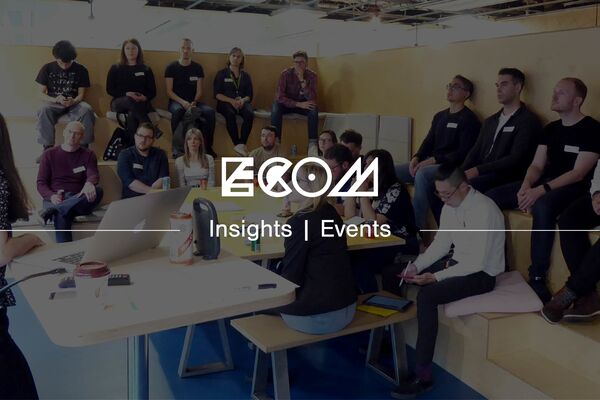What should be in a UX portfolio
Pubished 2nd November 2018
On the 1st November, ECOM partnered up with Lead UX Designer Anastasija Krysa and Senior Product Designer Simon Hook to host its first UX Portfolio Review Event for designers all different levels!
Did you miss? 4 relocators living the dutch dream
With UX and Product Design being such a competitive industry now, a Designers Portfolio has never been more important. It’s crucial to not only show what you can do but the steps you have taken to get there. This event was an amazing opportunity for designers to sit down and hear first-hand what needs to be included in your portfolio and how you should show/format your work. Here's what our consultants Jen Connah and Daria Olszewska learnt from this great experience.
But why is it so important to nail your portfolio?
Your portfolio is what sells you, it’s what gets you that dream contract at Google or permanent role at Facebook. It says a lot about you as a Designer and how you work just from looking at how you have presented your work. What does your portfolio say about you if you are a UX Designer and your website is impossible to navigate? What if you are a UI Designer but your site does not stand and out and is bland? This is a client’s first impression of you… so you need to take the time to get it right.
What do you need to do to nail it the first time? A few things…
Inspiration
Sometimes it’s hard to develop your own style when you are adhering to guidelines all the time with different brands. Go and look at other designers portfolios to get some inspiration of what you think works and what style you like/would adapt.
Less is more
Don’t overcomplicate your website. For example, if you have Animation skills that’s a great additional skill to have but don’t clutter your page with animations appearing all over the place, it does not need it. Make it your own and personal to you so it shows off some of your personality, but clean and simple. If you are struggling, create your own wireframes for your site so you can see how it would work.
Projects and Case Studies
It can be difficult when you are starting in the industry to have a decent amount of projects, some designers are worried they don’t have enough work to show and end up putting too much irrelevant work on their site. Keep it simple with around 5 projects (give or take) of your best work. Show them in a clear way: client name, type of project.
Process, process and process
Probably one of the biggest details I can’t stress enough! I come across so many designers who explain everything they’ve done in a project face to face…but have not included any of it in their portfolio. To be a successful UX or Product Designer you HAVE TO describe your process: why you were hired, the problem, the solution, the process and final outcome. This does not mean you have to write an essay on it, instead break it up with pictures and smaller paragraphs or bullet point describing what you did.
Evidence
As the UX or Product Designer you will know what happened and what you did to get to the final product. But do we? Include your sketches and wireframes, get photos of all the post-it notes on the wall and the team working on the project. Clients love that kind of stuff.
Who are you?
Some people don’t think an About Me page is that important- but clients and recruiters definitely do! So have a page about you and why you do what you do. Any hobbies? What do you enjoy? Contact details are important as well. What if a client or recruiter comes across your portfolio and loves your work and wants to meet you, but can’t get hold of you?
I hear all the time that Designers don’t have the time to work on their portfolios, and so the workload just builds and builds. It’s crucial to make time to work on your portfolio and get it right, which can take months! But it’s 100% worth it in the long run. After all, you want a portfolio you can put online and be proud of right? And be someone else’s inspiration- cheesy but true.
By Jen Connah


